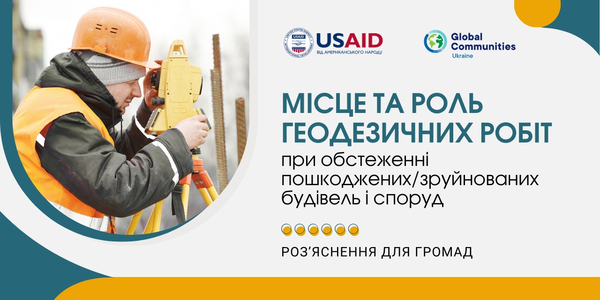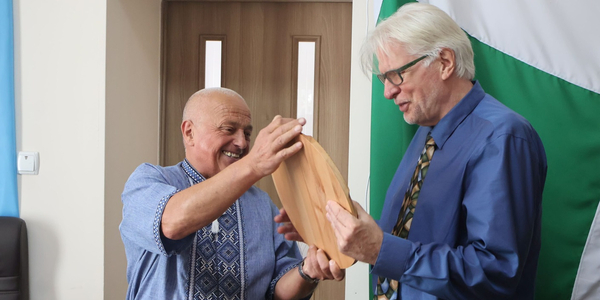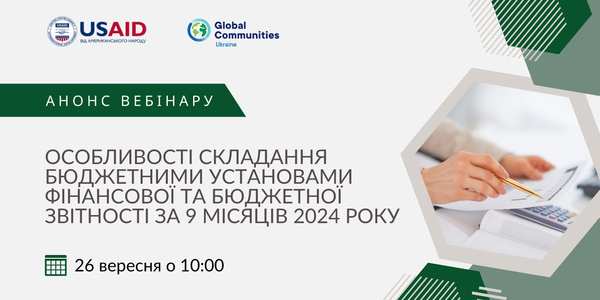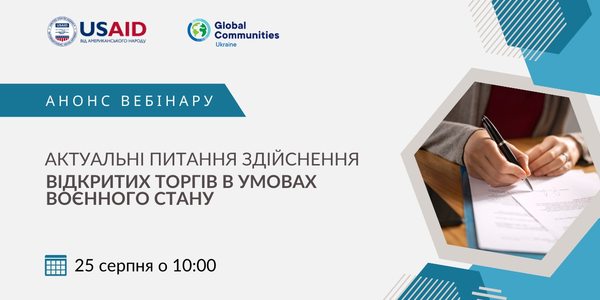Author: Oleksandr Kubrakov
Deputy Prime Minister for Restoration of Ukraine - Minister for Communities, Territories and Infrastructure Development of Ukraine
What is the priority for infrastructure and housing restoration in municipalities, how transparent is it, and where are the funds to be found?
One of the key tasks of the Ministry for Restoration is to support the development of municipalities and oblasts as well as to continue the reform of decentralisation despite the war.
Certainly, taking into account the war realities and losses faced by municipalities.
The World Bank has estimated the damage caused to Ukraine at USD 135 billion, while the reconstruction needs exceed USD 411 billion with this figure continuing to grow.
The damage to housing accounts for 37% of the total losses. A third of the 1.4 million damaged housing units have been completely destroyed.
Restoration of municipalities involves not only reconstruction of destroyed buildings and infrastructure, but also creation of appropriate environment for Ukrainians to return home.
5.4 million people have been internally displaced within Ukraine, most of them for more than six months (IOM, January 2023), and 8.1 million people remain in the European Union (UNHCR, February 2023).
We must first of all provide the necessary basic services to the people of municipalities. Our goal is not only to increase their recovery capacity, but also to establish the basis for their sustainable post-war development.
To this end, the Ministry for Restoration develops and implements a number of digital tools, solutions and mechanisms to fund restoration projects.
Digital tools and solutions
The key digital recovery tools are the Register of Damaged and Destroyed Property (RDP), the sectoral infrastructure recovery management system (Sectoral System) and the Geographic Information System (GIS).
The RDP is a source of reliable and verified data on material losses. This data is used for compensation programmes for damaged property, such as eRestoration, as well as for calculating reconstruction needs and reparations. The Register is being actively updated and municipalities are encouraged to submit data as soon as possible.
The Sectoral system is a "single window" for entering data on restoration projects. Since November 2022, when the pilot mode of the Sectoral system was launched, local authorities have entered 5,000 projects into it.
Some projects are already being implemented, including those funded by the European Investment Bank (EIB). In May, the pilot project was scaled up to the entire country. Any municipality can register and submit their own project for consideration.
The GIS system allows for the real situation of damage, recovery needs and development opportunities to be mapped using geospatial data.
The GIS will consist of three blocks: municipality information collection, reconstruction planning, and national, regional and local assessment.
The interactive map will show the extent and location of destroyed property, municipalities with limited access to medical or educational services, and changes in the number of people in various oblasts during the war.
The key point is that GIS will allow assessing the recovery needs of municipalities and monitoring the implementation of recovery plans and comprehensive development programmes to form the basis for an updated state regional development strategy. Some GIS layers are already in operation. Complete functionality of the system should be available in autumn.
The RDP, the Sectoral system and the GIS are the components of the DREAM state digital ecosystem, which forms the basis for large-scale reconstruction of municipalities and oblasts.
DREAM provides a digital route for each reconstruction project, and enables management and control at all stages.
This system covers all stages of reconstruction and manages investments in development and modernisation.
The ecosystem is built on the principle of "everyone sees everything". It provides access to open data and creates an atmosphere of trust on the part of all participants in the reconstruction.
The public part of DREAM will be presented in London on 21 June, with complete functionality to be launched at the end of 2023.
Financial support mechanisms
The authorities can finance the restoration not only from local budgets, but also through international assistance. Some cities and oblasts have already established such cooperation.
Unfortunately, not all municipalities possess such capacity and expertise, so the government offers two more funding sources: The Fund for Liquidation of the Consequences of Armed Aggression (Liquidation Fund) and the State Fund for Regional Development (SFRD).
The Liquidation Fund accumulates UAH 28.5 billion of seized Russian assets and UAH 35.9 billion of the National Bank of Ukraine's profit for 2022.
A key condition for developing a funding mechanism at the expense of the fund was the ability for municipalities to submit all the necessary projects.
Although the approved mechanism accumulates municipal projects at the level of oblast administrations, they are not selected at the oblast level. All of them are submitted to the Interagency commission chaired by the Deputy Prime Minister for Restoration.
Thus, each project has a chance to receive funding if it meets the main focus: critical recovery and provision of basic services in municipalities.
The first meeting of the Interagency working group to review projects for financing from the Fund took place in early May. At the meeting, we applied for the first time the project review methodology developed jointly with the civil society representatives - the RISE Ukraine coalition.
This methodology is an interim solution while our team develops a methodology for prioritisation in cooperation with the World Bank.
The formula used now sets a clear framework that includes an indicator of the need level, coverage (the number of people whose needs are met by the project), an indicator of need urgency, and an indicator of additional impact (environmental quality, energy efficiency, inclusiveness, and employment opportunities).
The working group approved most of the submitted projects, although some of them need to be revised: not all projects pay due attention to the arrangement of shelters.
It is important that all projects are submitted for consideration through the sectoral infrastructure reconstruction management system, which is part of the DREAM ecosystem.
Prior to the war, the SFRD was an effective tool for regional development but it was frozen in 2022. In 2023, the state budget allocated UAH 2 billion for the SFRD. Obviously, the principles of using these funds are expected to change.
The primary focus is on restoring the most affected areas, so 50% of the funds are allocated to support those 11 oblasts that suffered the most damage, with the rest going to all oblasts in equal parts. The final stage of voting for the projects will be conducted among municipal residents through Diia.
The changes in the mechanism for allocating funds did not go down well with everyone. Some politicians find the situation when critical infrastructure facilities will be restored while the final decisions are made by voting through Diia disadvantageous.
That makes it challenging to support the draft law No. 9165 on the use of the SFRD funds. We hope that progressive parliamentary parties will succeed and that the draft law will be approved in May.
Understanding that the use of digital tools and financial mechanisms requires significant capacity building for municipalities, the Ministry for Reconstruction, jointly with the Canadian project Support to Ukraine Reforms (SURGe), initiated the Community-led Inclusive Recovery (CLIR) project.
It will create a network of Reform Support Offices - expert teams to strengthen the municipal capacities.
Project objectives include providing advisory and technical support to municipalities, implementing anti-corruption policies, managing investment projects, using digital tools, and communicating with potential donors.
This column reflects solely the views of the author. The author of the column is responsible for the accuracy of the information. The editorial viewpoint of the Decentralization.gov.ua portal may not coincide with the viewpoint of the author of the column.




 Можливості й розвиток – як Вижницька громада на Буковині долає виклики й будує нові плани
Можливості й розвиток – як Вижницька громада на Буковині долає виклики й будує нові плани
 26 вересня - вебінар «Особливості складання бюджетними установами фінансової та бюджетної...
26 вересня - вебінар «Особливості складання бюджетними установами фінансової та бюджетної...


